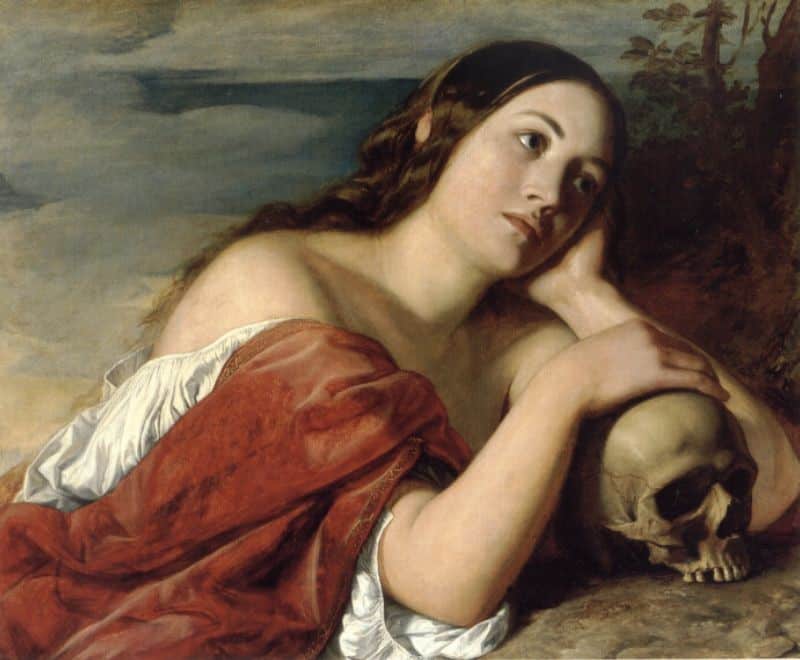The word ‘goth’ is used in various ways in various contexts. When applied to a person, what does it mean? Might you be a goth and not really know it?
If you need pictures of a goth, here’s a blog which features pictures of Goths Up Trees. Or try Goth Or Not website — a cousin of the Hot Or Not website — where you rate photos of people who are wondering whether they qualify. Or whatever.
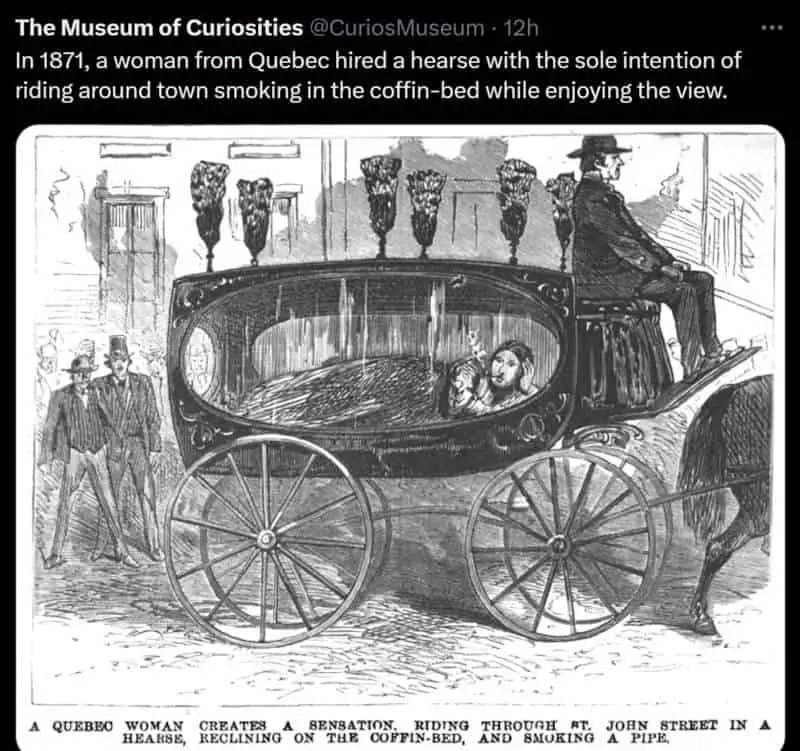
YOU KNOW A GOTH WHEN YOU SEE ONE BECAUSE OF THE BLACK CLOTHES, WHITE FACE OR SIMILAR, BUT WHAT DO GOTHS ACTUALLY BELIEVE?
Goth lifestyle allows for both commonalities AND differences from the dominant culture. But generally, goths hate the mall, mass media, popular fashion and hate doing things they’re told to do by marketing gurus.

IRONY IS EVERYTHING
Scientists Explain Why Goths Stay Goth For Life from The Frisky
Goths live their whole lives ironically. The most popular age group to be a goth is teens to mid-twenties — the goth subculture evolves as each generation of young people come in and out of it, each bringing their own particular ideologies and rebellions.
HAVE GOTHS MADE A COMEBACK?
It has been said a number of times that ‘goth has made a comeback’, but goths tend to resist this, because it was never popular in the first place, so can hardly be ‘back in fashion’. On the other hand, The continually accelerating cycles of consumer fashion means no one is really ‘in style’. Except goths.
Each generation is slightly different. Goth subculture in the 90s was heavily influenced by automata, dissection, prosthesis.
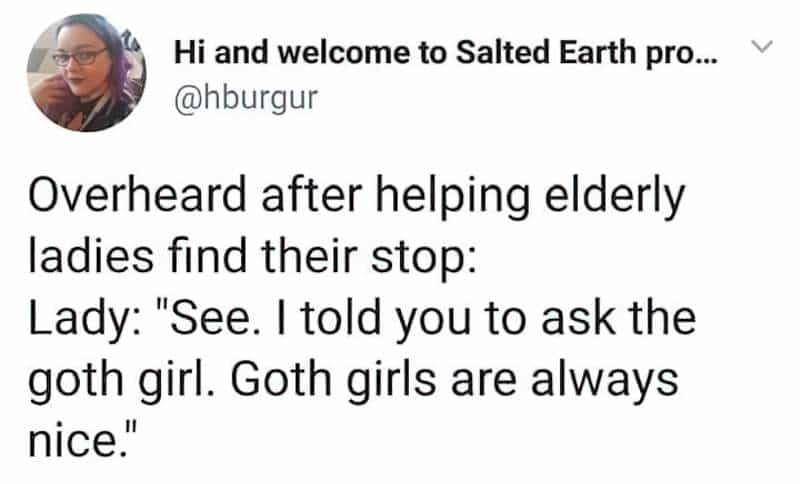
ANTI-NORMCORE
a style of dressing that involves the deliberate choice of unremarkable or unfashionable casual clothes.
Goth subculture is basically a kick back against mainstream culture, in which everyone wears what they’re told to wear, buys what they’re told to buy, listens to the music they’re told to listen to. Goth is anti- the passivity of the majority.
Of course, goth chic itself has become commercialized and somewhat mainstream, which is what happens when a subculture takes off, and now looks like pseudo-individuation. Goth is now also just as consumerist and commodity orientated as mainstream culture. This wasn’t meant to happen. (See: An Assortment Of Spooky Goodies To Delight Your Inner Goth from Gala Darling.) Most people buy what they’re told to buy. The goth ‘appropriates’. The goth ‘selects’.
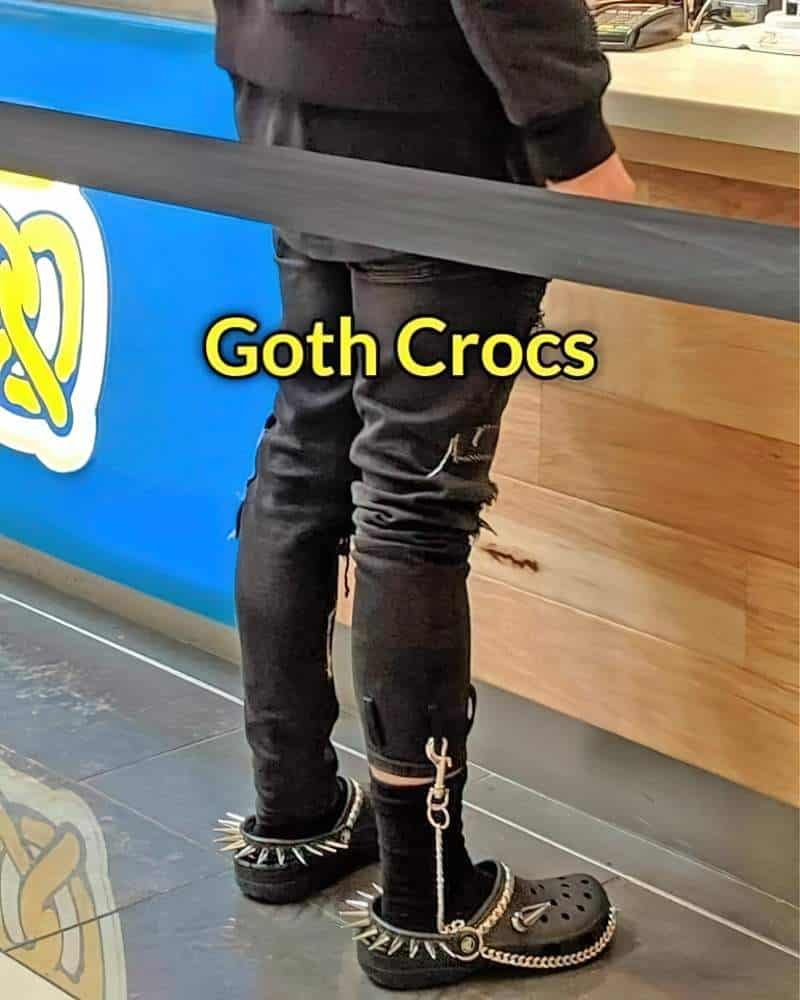
Goth is anti commercialisation, anti-The System and resistant to hegemonic capitalism,
Symbolic or otherwise. It has this in common with the hipsters. (See: Things Goths Hate, a blog in the style of Things White People Like) Goths know they’re dressing up as a kind of costume/performance. If hipsters dress a certain way, they don’t intend for it to be anything other than the way they dress.
Goths don’t like malls but do like second-hand shops, market stalls and mail-order services.
Goths feel inequalities keenly
They may be angry about things that happened in the past but also about the inequalities of the present. Goths are anti-violence and anti-prejudice, but because they share some tastes in music and fashion with the Trenchcoat Mafia (the Columbine types), they tend to be vilified and misunderstood. The media has been particularly unkind to goths since the late 90s when the Columbine shootings happened.
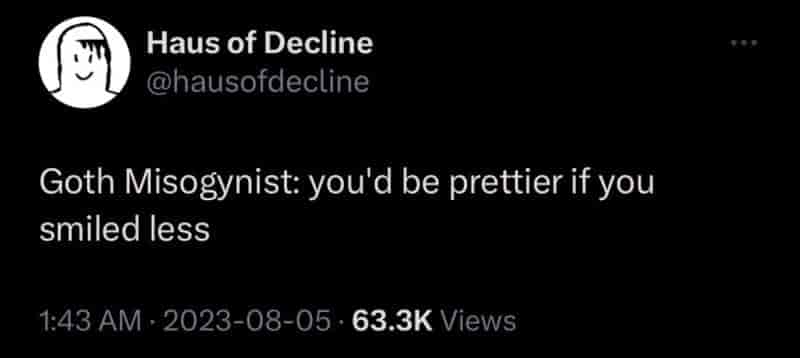
If goths are interested in the supernatural (vampires, ghosts etc.) it’s because as Anne Rice has said of her writing, exploration of the supernatural is the best way of telling the truth about reality.
Goths see beauty in the sinister, the arcane, the cadaverous, the morbid and the funereal
But goths also have a healthy respect for it. It’s not death that goths covet, but rather escaping everyday life. They desire some other world, not like this one. Dressing up lets them live a fantasy.
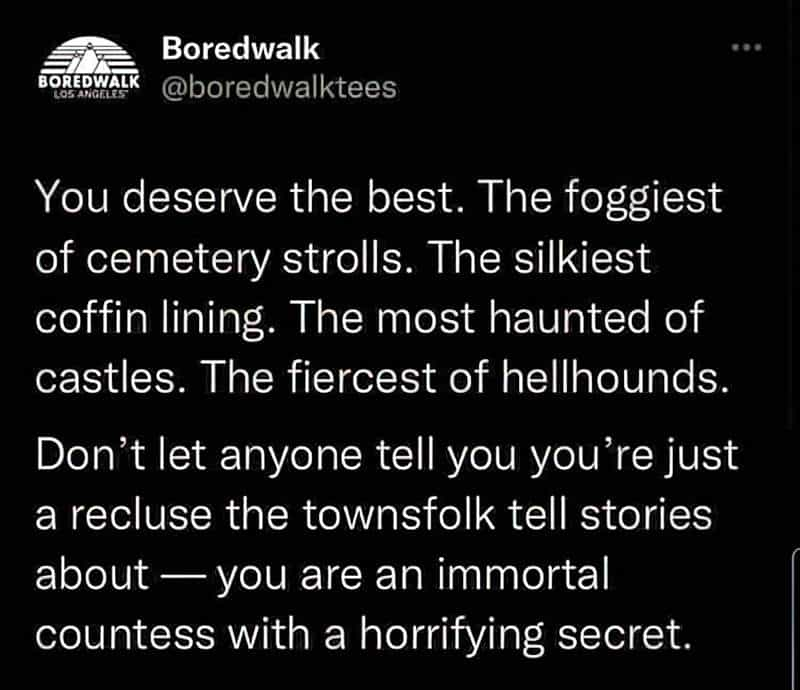
If goths turn sadness into a fetish, it’s only because mainstream turns happiness into a fetish.
There’s a perverse pleasure in propagating gloom when the culture feels like it’s on Prozac. Goths don’t smile; they smirk. But most goths downplay the miserable aspects and are instead positive about goth stuff.
“I LOVE YOUR AESTHETIC”
Goths pride themselves on having a creative personality and a strong aesthetic sense.
FRIENDSHIP AND BELONGING
That said, a lot of young people are drawn to the goth movement not for any political reasons, but for the camaraderie and the aesthetic alone.

MIGHT WE THINK OF GOTH SUBCULTURE AS A KIND OF RELIGION?
To be a religion, there needs to be some sort of supernatural power, or other spiritual beings, in which case goth subculture can be described as a parareligion at best. While most goths tend to be a bit sceptical about religion, being a goth doesn’t mean you can’t also be a Christian or belong to some other world religion. Parareligions are like religions in many ways, but lack the supernatural, powerful being (god).
Hanging out in goth spaces may involve psychotropic drugs and frantic dancing which lead to ecstasy-like experiences commonly associated with religions such as Pentecostal.
Goth nightclubs are a kind of church because they evoke a certain atmosphere. Smoke machines emit an odour which adds to the vibe of the place, in the same way that incense might be used in a church to remind the church-goer of place.
There’s a lot of religious iconography in goth subculture, but mostly it doesn’t signify anything.
Vampires have a bit of parareligious feel about them: The drinking of blood is sort of like a perverse Eucharist. Vampires are transgressive and reject death. Religions are pretty heavy on death, thinking about it a lot, performing rituals. By imagining vampire-like existence, that’s one way of mulling over death. Fantasy is pivotal for goths. The level of emotion vampire enactments/stories/imaginings can evoke parallel that of the world religions.
(Why are so many vampire stories so weak, asks io9)
WHERE DID GOTH SUBCULTURE COME FROM?
Before we had goths provoking reaction by running against the grain of mainstream culture we had dandies.
Like Wilde and Bowie, D’Aurevilly and his crowd “cultivated a kind of dandyism based on subtlety and subversion in their personal lives as well as in their creative works,” says Humphreys. For D’Aurevilly, appearance mattered as much as words. Humphreys writes: “Masquerading in outlandish garb and pinkie rings made the dandy the father of clash. Such dress was meaningful only if it provoked a reaction and ran against the grain of mainstream culture. Attire was a superficial manifestation of the expression of genius, but it too had to reflect the cutting edge of irony.”
Bowie, Wilde, and the Fin de Siècle Dandies: Exploring the David Bowie/Oscar Wilde/French bohemian dandies connection from JStor Daily
Goth was at first barbaric, then romantic, then there was goth subculture.
POLITICS AND GOTH SUBCULTURE
Goth subculture emerged with the decline of Thatcherite politics late 1970s Britain once punk itself started to be exploited as a commercial thing. (Commodification is one way a subculture can disappear.) Goth subculture grew out of punk, which itself drew on fringe cultures: Dada, garage rock etc. Goth is the first form of rock which couldn’t be traced back to rhythm and blues.
Punk: The world is broken, I’m angry and I’m fighting to fix it
A meme doing the rounds
Emo: The world is broken and I’m sad because there’s nothing I can do to fix it
Goth: The world is broken but there’s an odd beauty in the dark parts
Ska: Maybe the world is broken, but I’ve got a fucking trombone.
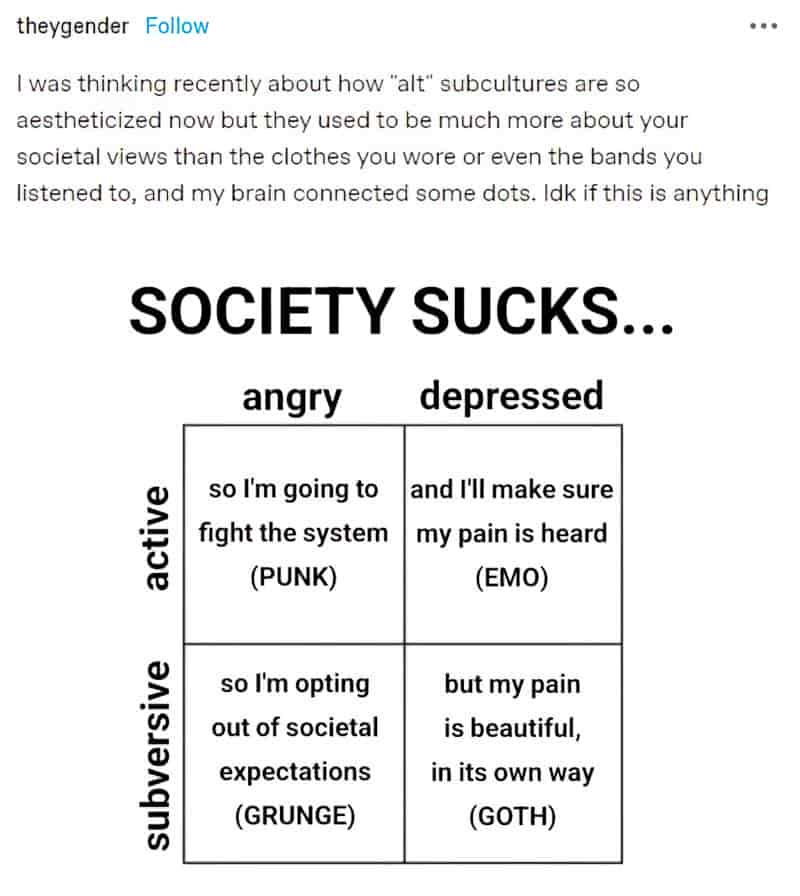

By this description of Goth, there’s much in common between the Goth world view and the ancient and traditional Japanese concept of wabi-sabi.
EMERGENCE OF THE GOTH SCENE
The goth scene, however, emerged n the 90s, post 80s punk. By the mid-1990s, goth subculture had mostly disappeared from public view but was left with a number of true devotees. But big money could no longer be made from the trend.
GOTHS AND PUNK
While goth subculture have its roots in punk, but whereas punk is militant, asexual anarchy, goth is romantic, obsessed with death, darkness, perverse sexuality. It is carnivalesque and androgynous.
BAUHAUS
The most important starting point of Goth was Bauhaus (from Northampton), especially the single ‘Bela Lugosi’s Dead’ (1979).
The song features macabre, funereal, lyrical references to the undead, deep-voiced eerie vocals, a dark twisted form of androgyny. Bela Lugosi was a Hollywood actor born 1882, famous for playing Dracula.)
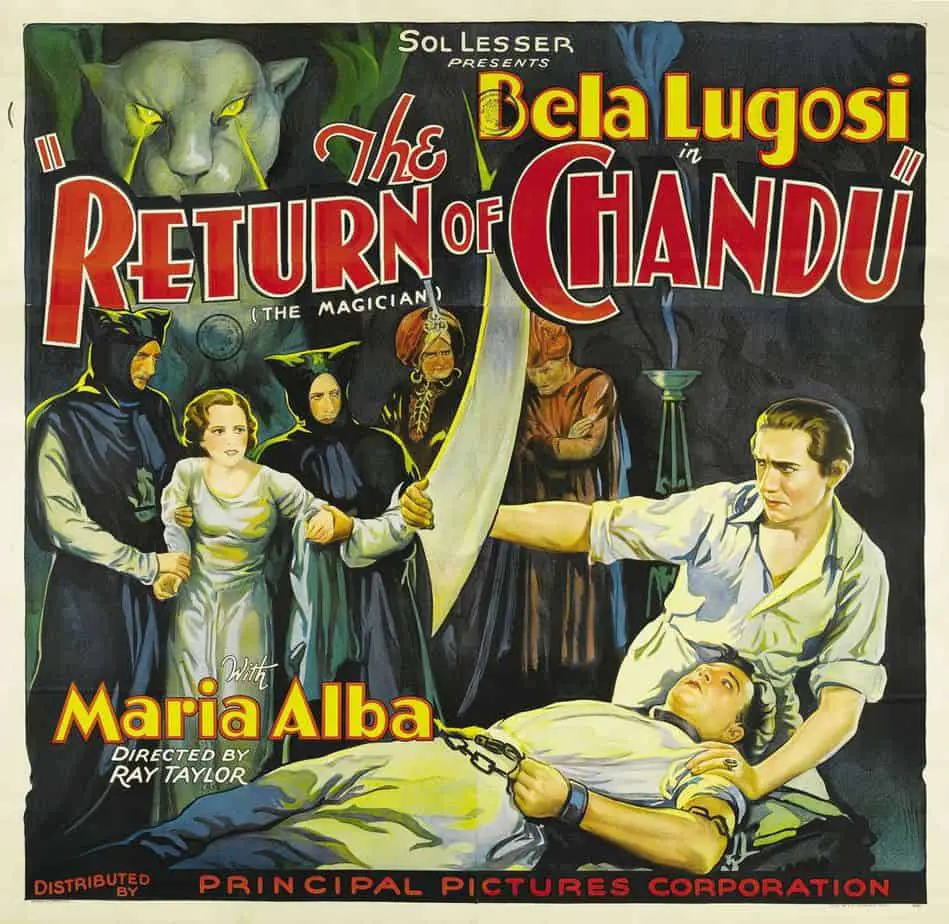
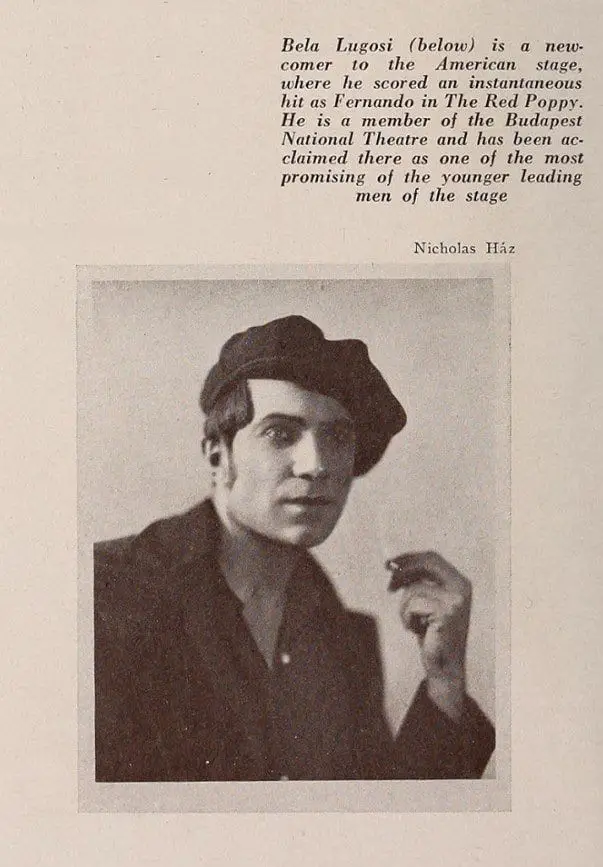
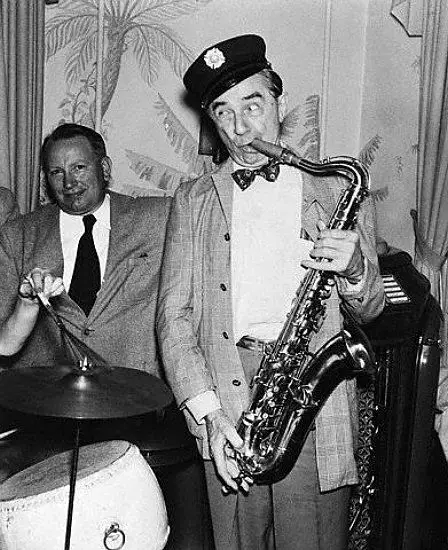
GOTH CULTURE AND JOY DIVISION
Joy Division was one of the first post-punk bands which is gothlike in its melancholy. When one of the band members killed himself on the eve of their first USA tour, the band seemed even more embraced by the goth community. Joy Division’s promo material and record company seems to draw attention to absences in the same way as Freud describes melancholia.
Related to Melancholy: Saudade, a word with no direct equivalent in English.
Unlike grief after the death of someone or something known, melancholy is the feeling you get when you’re grieving for something and you don’t know what that something is. Goths find a certain pleasure in that very feeling.
NEW ORDER
The surviving band members became New Order.
INFLUENCES ON GOTH SUBCULTURE
Goth subculture draws from and is influenced by:
- punk, especially The Sex Pistols
- vampires
- literary-historical traditions
- horror movies
- B-movie camp
- Celtic/Pagan/Egyptian/Christian mythology
- cyborg/techno cultures
- sexual fetish cultures
- subterranean drug cultures
- the pre-Raphaelites
- Nietzsche
- Lautreamont
- Dali
- Sartre
- The Velvet Underground, The Doors and other 60s dark psychedelic rock
- the mysterious and supernatural
- David Bowie (for his androgyny and deep voice)
- Before the Internet there were goth fanzines: Kaleidoscope, BRV Magazine, Tomb Raver, Meltdown, Gothic Times, Dawn Rising, The Black Box, Naked Truth
- NME and Melody Maker were music mags from the 1980s
- Whitby Gothic Weekend, The Bizarre Bazaar is part of the Whitby Gothic Weekend, where goths can buy their gear
WHY THE BLACK CLOTHES AND THE WHITE FACE?
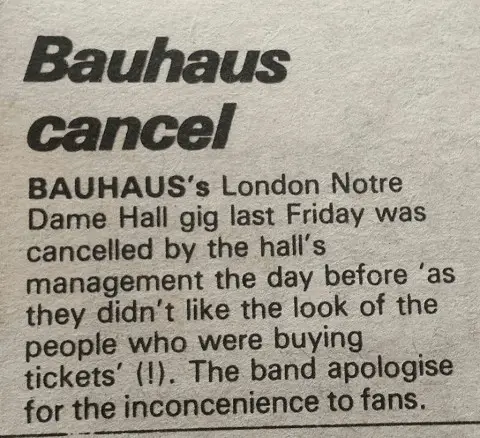
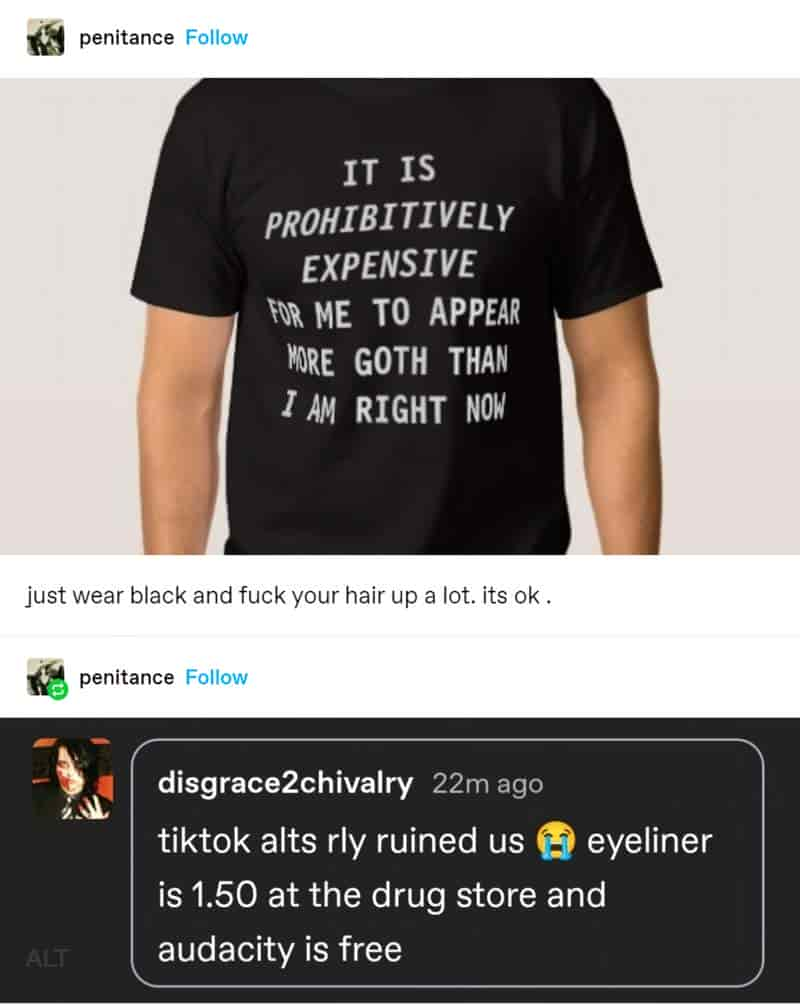
SIOUXSIE SIOUX
The dark hair/white face goth dominatrix persona was popularised by Siouxsie Sioux of Siouxsie Sioux and the Banshees. Sioux is famous for her ice queen persona. Their whiteness has nothing to do with white supremacy — it’s all about death.
MAKE-UP
This kind of makeup is the inverse of traditional youthful beauty: rosy cheeks, red lips, healthy complexion. It’s a finger up to those who tell others what they should look like. It’s saying, I don’t exist to please your eye.
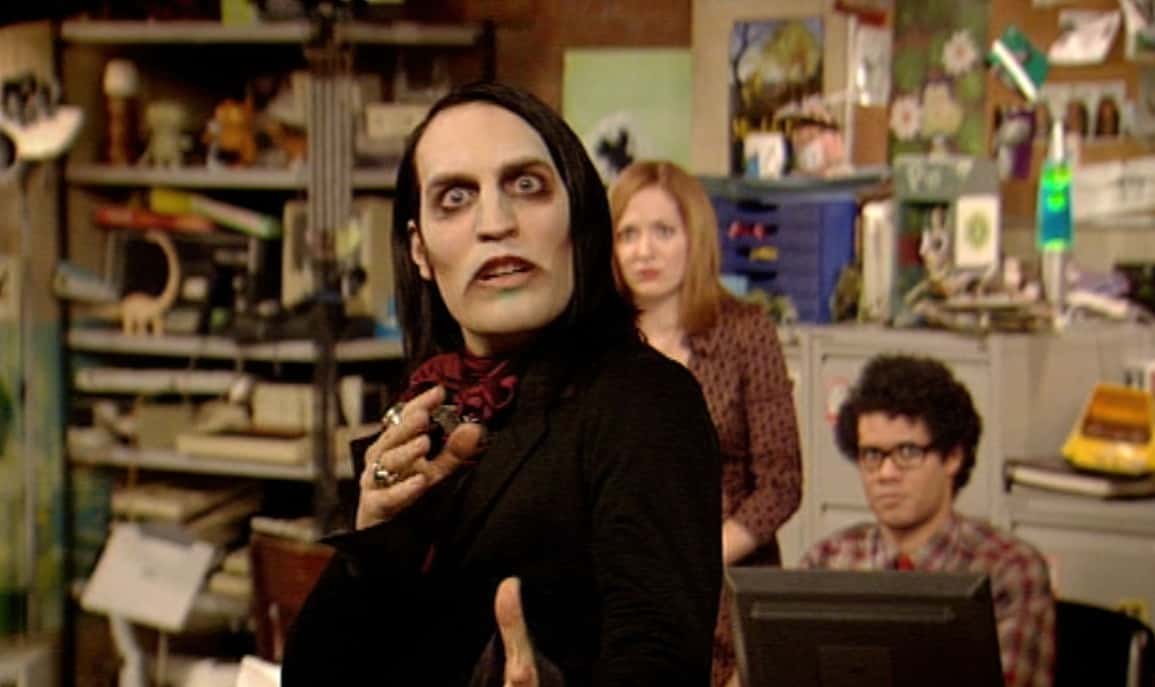
DEATH CHIC
Death chic has its roots in Victorian invalidism. The female body has historically been pathologized — a diseased object. In Japan, this takes a slightly different form — or perhaps only the name is different: Ganguro.
SICKNESS FASHION
The interest in ‘sickness fashion’, when taken to the extreme, looks a little like Body Integrity Disorder, in which someone wishes for illness. In Japan, there is the bandage fashion.
THE INFLUENCE OF SPECIMEN AND SISTERS OF MERCY
Specimen started the ripped fishnet stockings, mesh tops, and other see-through fabrics. Dark hair, pointed boots, tight black jeans, shades comes from The Sisters Of Mercy.
GOTHS AND FETISH
Goth clothes are mostly sans sexual connotations, even if the clothes are from sex shops (PVC, fishnets). If Goths buy or wear anything that happens to be popular, they’re only doing it ironically.
Makeup Bag: World Goth Day Edition, from Frisky
WHY DO MALE GOTHS OFTEN DRESS LIKE WOMEN?
Whereas female goths rebel against feminine beauty with the Siouxsie Sioux make up, the best way for male goths to rebel is by dressing as women. This is a rebellion against the pressure to conform to the mainstream culture’s idea of masculinity, which is very narrow and restricting. For males, androgyny offers a way to manipulate the straight male gaze, but first inviting it, then turning it on its head. It’s a way of dealing with the domination of other men. (Men are as much contending with the patriarchy as women are)Goth is resistant to gender and sexual norms that have upheld capitalism since the 18th C Goth subculture is ideologically against the gender binary, embracing people of all genders/sexualities/sexes.
When male goths dress in traditionally feminine clothes they are often mistaken for cross-dressers, transvestites, and gay men, and the goth subculture may be a safer place to try subverting the gender binary.
But in fact most men in Goth subculture aspire to androgyny, David Bowie style. Bowie made no effort to pass as a woman on stage. He aimed for no gender in particular.
There is no female androgyny because there’s nothing masculine about a woman in pants when women are allowed to wear pants. (Does not apply to butches.)
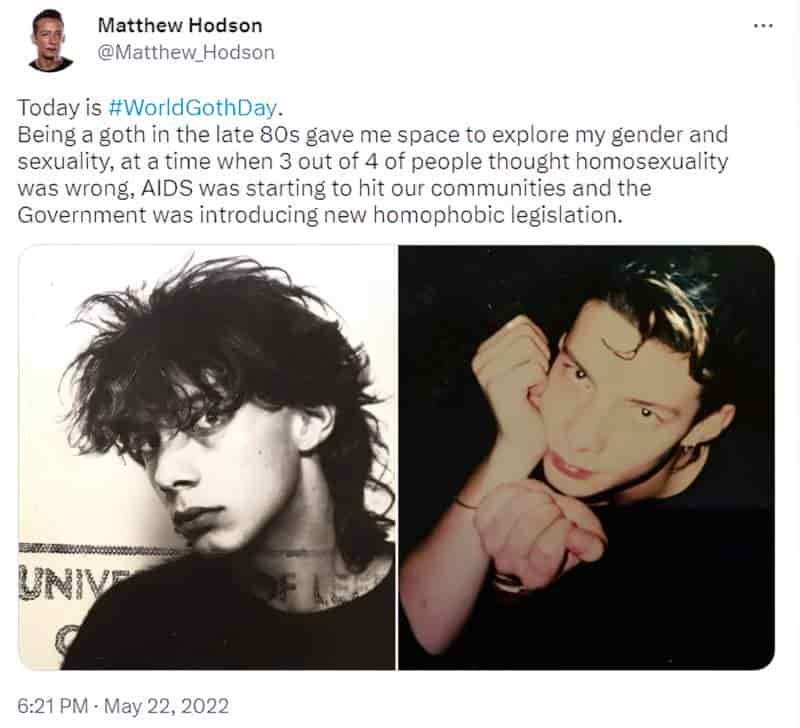
In Gothic Queer Culture: Marginalized Communities and the Ghosts of Insidious Trauma (University of Nebraska Press), Laura Westengard examines the intersection of queerness and the gothic.
Westengard’s scope is broad enough to encompass Lady Gaga’s meat dress, lesbian pulp fiction, Dracula, queer literature, and sadomasochistic performance art. What brings these diverse cultural objects together is the way they re-appropriate tropes of the gothic that have been used to marginalize queer and gender-variant people throughout history.
If mainstream culture depicts queer people as predatory, monstrous, and threatening, the artists analyzed in Gothic Queer Culture find beauty and meaning in gothic tropes: in the crypt-like undergrounds of lesbian bars, the vampiric performance art of Ron Athey, and in the Frankensteinian practice of juxtaposing conflicting genres in the same text.
The gothic then becomes a way to process trauma and rewrite the often-conservative genre of the gothic as something proudly queer, unsettled, and unsettling.
New Books Network
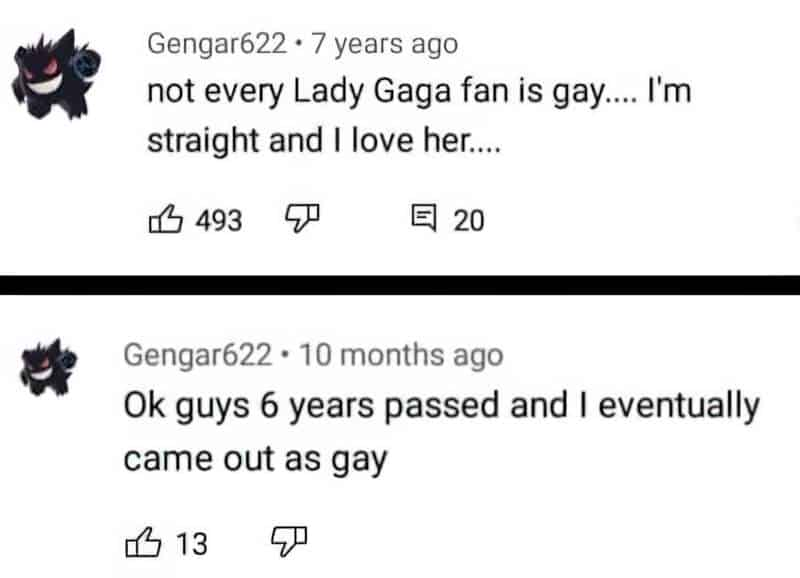
Types of goth fashion
- high chic
- antique
- retro-kitsch
- punk
- fetish
- secondhand trash or a combo
An excellent example of a Goth: The artist Jeffrey Catherine Jones.
DOES THIS MEAN GOTH SUBCULTURE IS MORE FEMALE FRIENDLY THAN MAINSTERAM CULTURE?
You would hope so, and this is probably the aim. Goth men are more likely to touch each other, and there is a veneration of sexual ambiguity.
While masculo-coded goths dominate the industrial scene and goth rock, the goth-scene is indeed more even in terms of gender representation. Goth culture allows men to display sensitivity, emotion, theatricality and artiness, whereas the hyper-masculinity of the dominant culture does not, but what often happens is that androgynous men take up the spaces which might otherwise have been occupied by women. Women are pretty much absent from certain subgenres of goth music (heavy metal), for example. The stage is occupied entirely by androgynous men.
Nick Cave is a good example of an Australian goth influencer whose work is ironic and also sexist. The irony doesn’t take away from the sexism, because ironic sexism is still sexism.
But overall, goth subculture may be slightly less sexist than mainstream culture, at least in the music scene. There’s better gender balance in the goth music scene than in other styles and in other styles the women are almost always singers. In pop music, the role for women in general is that of ‘fan’, but in goth world, about half of women making stuff were in clothes. There’s still few female DJs. Some prominent women in goth world: Siouxsie Sioux, Danielle Dax.
In the end, each goth meeting place has its own subculture. Many goth night clubs in big cities are a relatively safe space to come out if you’re trying out a different sexuality or gender. Putting on a goth costume which all but masks your real identity helps in that.
(Examples of popular clubs: Slimelight a London goth club, also The Phono, Toreador, the Mercat, The Barrel Organ, Full Tilt, The Deviant Society, The Batcave, in London)
CRITICISMS OF GOTH SUBCULTURE
Goths can sometimes emphasise the irrational and supernatural at the expense of accurate historical analysis and rationality, preoccupied with psychology rather than history.
MISOGYNY
Some critics think that goth subculture suits teenage girls, who are all doomed romantics, and self-obsessed, passive and inward looking, while punk is a more masculine subculture. This reinforces gender stereotypes, of exactly the kind that goths want to break down. It’s easy to think Goths fake feeling miserable because they’re often white middle class and can’t possibly be all that miserable.
HEALTH
Many goths aspire to death chic. It challenges dominant beauty ideals which are based on health, and on femininity. (The beauty of men is less noticed.)
Unfortunately, men who are into the death chic look only end up contributing to the fetishization of such a body. There is a lot of fat hatred too, especially of female goths, in a subculture which fetishizes death chic. Goth subculture may well spurn traditional beauty standards, but instead they’ve supplanted it with their own: tall, thin, pale, no body hair, part Asian — that’s the ideal. Other types of bodies do not escape scrutiny, especially when dressing in PVC. There’s a lot of body-hatred among teenage goth girls.
BREAK THE RULES, GET NEW ONEW
There are also rules. Although Goth subculture likes to think it’s all about rebelling against rules, Goths who are too much into the horror and vampire stuff catch flack for being too serious and too stereotypical. So it’s definitely possible to be Not A Proper Goth.
Marilyn Manson shoulders blame for the proliferation of ‘baby goths’: 15-year-olds jumping about in Marilyn Manson t-shirts with short hair and a bit of eyeliner. Conformity is the rule, in a way.
IDEOLOGY OF THE ONE TRUE SELF
Other girls wear different gear every weekend: ‘plurality of selves’. Critiques say they really need to make their minds up about who they really are.
PROBLEMATIC SUBGROUPS
The political stand of inclusiveness and equality doesn’t mean there aren’t extreme right-wing, racist views among some goths, including some high profile goth influencers. Before he killed himself, Ian Curtis of Joy Division voted conservative and was sometimes openly racist. Although the whiteness most often associated with goth subculture is most often depicting the pallor of a dead person, some may see this as emphasising whiteness.
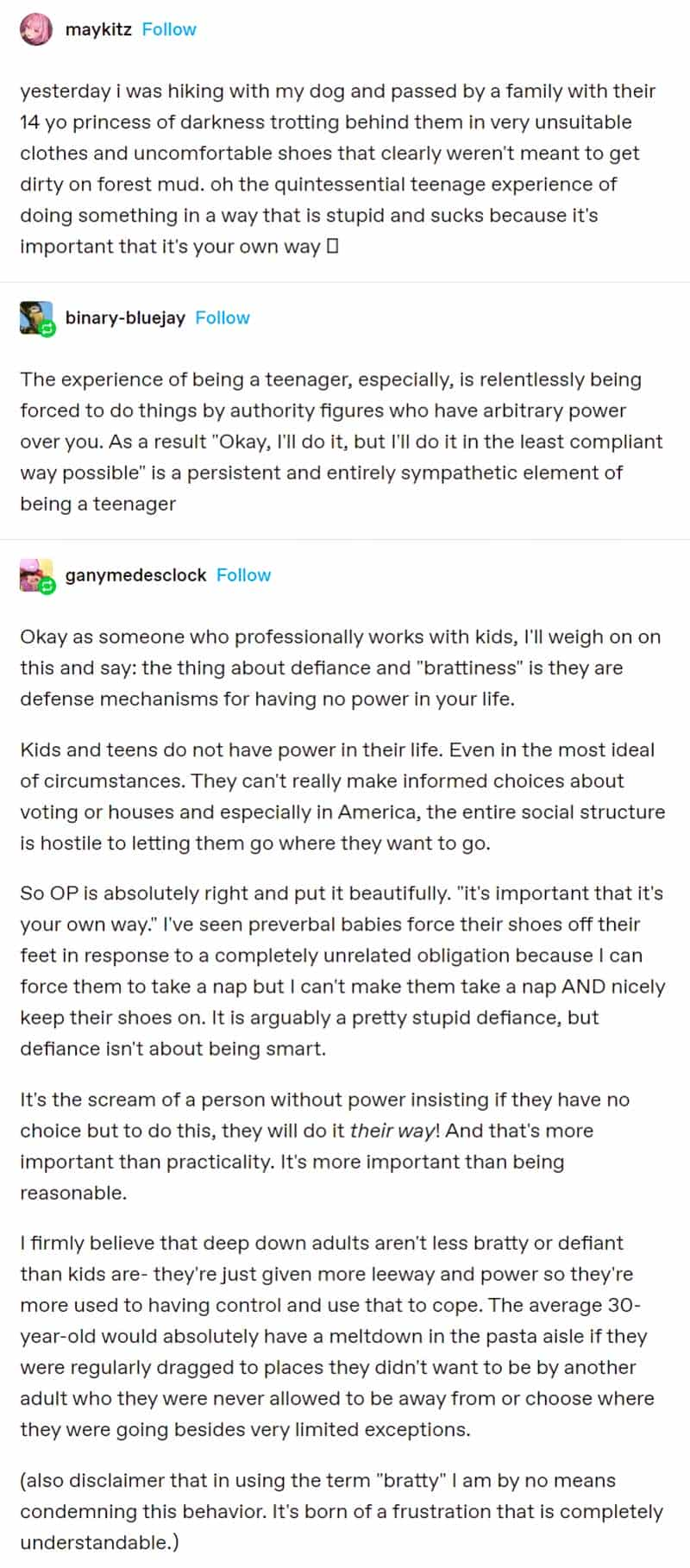
WHAT DO GOTHS LIKE?
All goths are different but here are some typical examples:
- Canonical and avant-garde gothic writing: Anne Radcliffe, Edgar Allan Poe, Sheridan Le Fanu, Bram Stoker, Oscar Wilde, H.P. Lovecraft
- “The Turn Of The Screw” by Henry James
- Vampires (sometimes ironically)
- Contemporary gothic writing: Anne Rice, Storm Constantine, Ian McEwan, William Gibson, Poppy Z. Brite, Nick Cave
- The illustrations of Edward Gorey and art by Andy Warhol, who managed The Velvet Underground
- Bands such as Play Dead, The Birthday Party, Alien Sex Fiend, UK Decay, Sex Gang Children, Virgin Prunes, Specimen, The Sisters Of Mercy, The Mission (the acrimonious off-shoot of The Sisters Of Mercy), The Danse Society, the Cult
- Bauhaus and Sisters of Mercy are no more. New bands have since replaced them: Lycia, Faith and the Muse, Type O Negative, Nine Inch Nails, Interpol
- Industrial music was also pretty popular among goths
- Other bands: Fields of the Nephilim, All About Eve, The Cult, The Cure. (The Cure doesn’t self-identify as gothic, but goths see it as such.)
- Depeche Mode, Dead or Alive, Echo and The Bunnymen have a tenuous link to goth subculture.
- Nine Inch Nails fuses goth rock and industrial dance music.
- Marilyn Manson is “Alice Cooper reincarnated”. He is heavy metal rather than goth, but his androgyny makes him goth-like.
- Many goths look down upon Nick Cave, Neff and Skeletal Family
- Clothes made from: leather, velvet, silk, PVC, chains, lace
- Clothes may include: sunglasses, top hats, capes, corsets, cravats, riding crop, lunchbox purses
- Hair: red, black, purple, Kabuki inspired
- The 1983 film The Hunger is an arty Hollywood vampire film which is big in gothworld. (Soundtrack: Bela Lugosi’s Dead)
- Edward Scissorhands (1990), which has achieved cult status with a few different groups, including goths. This is because it “restages a familiar tale of teenage alienation by exploiting a filmic nostalgia that paradoxically locates moral and psychological authenticity in the amateurish technologies of Tim Burton’s beloved 1950s and 1960s monster movies.” (from Goth: Undead Subculture)
- Romantic poets, Pre-Raphaelite painters, vampire-aristocrats, decadent aesthetes are hallowed icons.
- Things that transform themselves into something else. Vampires are one example, which explains the popularity of Dracula, who transforms himself into a flock of crows.
- Propaganda was a popular goth mag.
- Friday Playlist: Every Day Is Halloween — 14 songs from a former goth, compiled by a writer at Rookie Mag
- Even some fantasy is labelled goth: work by Terry Pratchett, Anne McCaffrey, Isobelle Carmody. (These authors all use the word ‘miasma‘ at some point.)
- Crucifixes, churches, graveyards, bats
- Black pet cats
- Extended black eyeliner
- Cheekbone accentuating blusher
- Darkened rooms
- Stage smoke
- 18th and 19th century fashion for females: dark corsets, bodices, lacy/velvet tops/dresses
- Fake fangs, coloured contact lenses
- silver jewellery
WHAT ARE SOME OTHER SUBCULTURES SIMILAR TO GOTH?
“Industrial” subculture is like goth but more masculine than androgynous
- punk — goth has survived better than punk, which takes an angry sort of glee in displaying the swastika and other repulsive signs simply for shock value. Punks seek to empty such signs of their historical value. They hope to turn them into irony. But perhaps the world isn’t sufficiently well-attuned for such irony.
- grunge — has all but gone since the mid 90s, but goth lives on
- crust punk — goth may have most in common with this kind of punk
- cyberpunk
- mods and rockers
- new romantics — romanticise death
- beatniks — black shades, black turtlenecks, long black dresses with layers of meaning. With goth there’s a darker side: a bit sexy, a bit evil, somehow threatening, not wholesome.
- emos (Real Emo Has Nothing to Do With Hot Topic from Good Men Project). From Urban Dictionary: In the early 90s there was a movement in the hardcore genre called “Emotive Hardcore,” spearheaded by Rites Of Spring. Harder-core-than-thou kids, who swore by Dischord Records a la Minor Threat, actually coined the term “Emo” as something of a put-down for the kids who really liked Rites Of Spring, Indian Summer and this new wave of “Emotive” Hardcore bands. How Emo Got Political.
WHAT IS SOME SPECIFICALLY GOTH TERMINOLOGY?
- Goths call people of the dominant culture “normals” and speak of “mainstream culture” or “trendies“
- Mainstream music is sometimes referred to as “bubblegum music”, compared to “serious music”.
- Capitalist is used as an insult.
- Goths who only adopt certain parts of the subculture are labeled ‘part-timer’
- ‘Gother than thou syndrome’ — sleep in coffins and then tell everyone they do it
- Unheimlich is a Freudian term which means ‘uncanny’ and refers to the class of things that lead us back to what is known and familiar. Its counterpart is heimlich, which means canny or homey.
- Gothadelic — a superlative meaning something is wonderfully Goth
- Gothdom refers to goth subculture generally
- Goth-spotting
- Getting ‘gothed-up’
- Goth types: tail-coaty, vampiric, Nephilimy goth, baby-goths
- It’s not a ‘subculture’ or a ‘tribe’. It’s a lifestyle.
- Here are more specifically goth words, many relating to fashion at Stripy Tights and Dark Delights.
- Bambi Wicca — a type of modern witchcraft which focuses on the ponies and rainbows side of life
What about goth sexuality? Anything different there?
Goth subcultures can fetishize certain objects. Anything at all can be fetishized of course, but it’s often the fashion and accoutrements and the props. People with sexual fetishes are often thought to be hypersexual but in fact a fetish can stand in for sex as we typically mean it. Mainstream interpretation of this kind of fetishistic outlook is in direct opposition to say, the hippies, who get naked and have lots of intercourse, but goth sexuality may have more in common with a Catholic sort of taboo on sexual activity, in which the forbidden becomes more erotic. Goth subculture eroticizes asceticism. For example, goth fashion often (but not always) covers the entire body (long skirts, not mini skirts), boots (not bare feet). The ubergoth would be a necrophiliac, but they are very rare.
There is no irony in fetishism. Fetishists are very serious about it.
So what does Goth subculture have to do with the 18th and 19th Century goth?
Critique of bourgeois culture.
WHAT DOES GOTHIC SOUTHERN AMERICAN LITERATURE HAVE TO DO WITH THOSE YOUNG PEOPLE DRESSED IN BLACK?
Irony, from what I can gather. And a preoccupation with death and the supernatural.
See: Origins Of Gothic Literature from Interesting Literature
Southern Gothic does not actually exist as a Library of Congress subject heading, however widely used the term. The following writers are often called ‘Southern gothic’. If you’ve read any of them you should have a general sense:
- William Faulkner
- Flannery O’Connor
- Cormac McCarthy
- Harry Crews
- Shirley Ann Grau
- Doris Betts
- Padgett Powell
- Mark Steadman
- Poppy Z. Brite
- Nick Cave, who writes parody of the genre. (I’m not sure how many of those authors dressed in black.)
Here’s the Wikipedia entry on Southern gothic literature.
The following is from an essay from Goth: Undead Subculture:
Snakes in the trees, plantations on every block — these images, though at odds with each other, are familiar components of the southern mystique. Writers working in the southern gothic tradition, notably William Faulkner and Flannery O’Connor, have simultaneously contributed to and undone this fantastical construction of The South. It makes perfect sense to us that Faulkner and O’Conner set their fiction down south; where else would they, and why would we want them to set it anywhere else? What seems more surprising is that so much contemporary fiction associated with goth subculture is set in the South. Southern gothic writers appeared to have no choice but to write about the South, to voice some truth about their region: what, then, is the South’s appeal for goth writers, and what does it look like in their work?
“Ah Am Witness To Its Authenticity”: Goth style in postmodern Southern writing
That final question is an important one, and here are some further points from the essay:
- In the popular imagination, the South is deep and dark, and so writers don’t need any further justification for including violence set there. Same goes for supernatural.
- Dark humour depends on “a distancing of social actuality” — lack of attention on the origins of class oppression.
- Goth writing depends on the supernatural. Southern goth writing is more realist. What’s figurative in Southern goth writing is literalized in plain goth writing. The South is America’s ‘ideological other’. Anything is expected ‘down there’. Why not ghosts and vampires also?
- The gothic trope of the haunted house translates to, in southern literary terms, the haunted plantation. Southern gothic is often a ghost story without the ghost.
- Goth writing includes: parody, pastiche. Parody is maybe the only type of power available to a writer or critic living in this age. Nothing is original. [Goth chic is a parody of the Western beauty standard, so that makes sense.]
- Southern goth writing takes the supernatural as its very subject.
- By humanizing the inhuman — animating houses, making flesh-and-blood heroes of vampires, turning a hunchback mute punching bag into the star of a big book — goth writers reverse the southern gothic’s concealed dehumanization of the South.
- Southern gothic encourages our “alienated and unsympathetic” response to the South, whereas goth writing solicits sympathy for the traditionally unsympathetic, inhuman (or sort of human) subjects. In this way, goth writing tries to rouse us from our rote approach to reading the South.
- Goth writing has given Southern writing a shot in the arm. Goth might achieve its aim in exploding the myth of the South by completely overdoing the supernatural.
Are there goths in Australia? Why?
The more mainstream culture tries to define what’s Australian, the more scope there is to rebel against the definition. There has been a lot of talk about what’s ‘un-Australian’ in recent years, which by default defines what’s ‘Australian’.
The next essay in the same book of essays is about Australian goths. If goth subculture is anachronistic, goths in Australia seem in the wrong place as well — nothing contrasts more with black garb than bright blue skies. Yet there is a definite gothic-ness about Australian literature which stretches right back to convict times, “emerging at the origins of settlement and consolidating itself in the 1890s in gothic romance based both in the bush and the city, and then underwriting the subsequent canonical works of Christina Stead and Patrick White as well as more recent literature from Louis Nowra, Peter Carey and Elizabeth Jolley, among many others”.
Daniel Nettheim’s film Angst (2000) is the first Australian film to feature a goth as one of its main characters. (Um, it’s only got 5.9 on IMDb.)
Edward Dunglass is Home and Away’s own out-of-place Australian goth.
The Music Of Razors is an example of an Australian goth sub-cultural book. Then you’ve got the books of Nick Cave, the latest of which was written entirely on his mobile phone. (Judge from that its quality, if you’re inclined to pre-judgement.) See also Kim Wilkins, author of speculative fiction for adults and YA.
See also: Fear and Loathing In The Australian Bush, in which Aboriginal cultures are seen as Australia’s ‘Other’.
GOTH INFLUENCES ON MAINSTREAM CULTURE
Goth subculture has influenced The Matrix, Buffy the Vampire Slayer, Hot Topic (a “counter-cultural” shopping mall chain), Emily The Strange, Sid and Nancy (the movie), Bram Stoker’s Dracula, Edward Scissorhands.
The Matrix detaches goth style from goth sensibility.
Donnie Darko does the reverse. Donnie doesn’t wear goth clothes even though the film is set in 1988, at the height of goth fashion
Buffy is popular because it privileges the communal ideal outside the family values sit-coms, unlike Anne Rice’s books which privilege individualism.
Header painting: William Dyce — Omnia Vanitas
